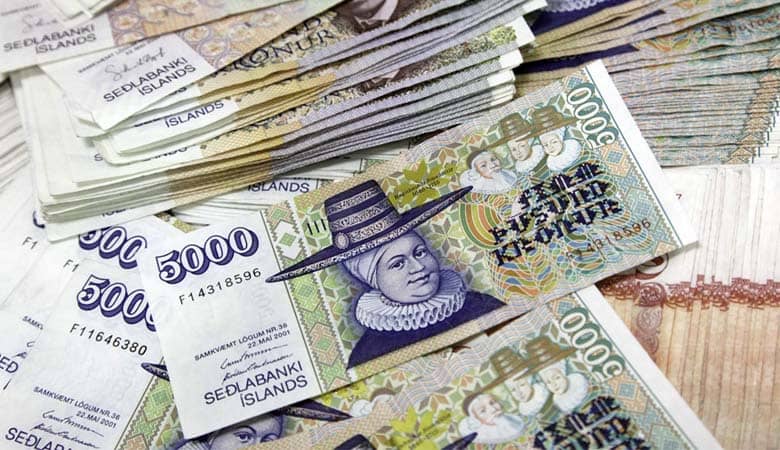
Icelandic currency can be intimidating to visitors accustomed to less expensive world currencies. It’s important to know a few things about it before your trip. You can order Icelandic money from your bank before your trip. This can be done conveniently and is usually cheaper than in Iceland.
Cash
Iceland is an expensive place to visit, and the reason for this is simple: due to its geographical location and hostile climate, it needs to import almost everything it consumes. This, combined with high taxes, drives prices up. That is why it is so rare to see locals carrying cash in their pockets, relying instead on their bank cards. Even the remotest campsite will have a card machine to take payment. It is always wise to check your overseas charges with your bank and inform them that you will be traveling abroad, as this will prevent unfavorable currency exchange fees from being charged.
The Iceland currency, or krona, has been used since 1885, when it first replaced the Danish krone as the country gained independence. The currency name comes from the Danish kings ruling the country and using the word króna for their currency. It is important to remember that most of the country does not accept cash for purchases, so you should plan accordingly. It is also a good idea to carry some cash, especially if you visit small villages and rural farmhouses. You should also ensure a valid driver’s license to avoid issues when purchasing gas or other essentials in Iceland.
Credit Cards
Credit and debit cards are widely accepted in Iceland, whether you’re shopping for souvenirs or filling up at one of the island’s many gas stations. Most retailers accept Visa, MasterCard, and American Express cards. Some shops may require a PIN or your signature when using your card. Be sure to check with your card provider before your trip to see if you should be aware of any specific country restrictions or charges.
You will often be asked if you want to pay in USD or Icelandic krona when using your card. It’s important always to choose the latter, as paying in your home currency can result in unwanted foreign transaction fees and unfavorable exchange rates. Using a debit card is often the best option when making purchases in Iceland. It pulls the money straight from your bank account, eliminating the need to convert it to local currency. It also allows you to keep track of your spending and avoid overspending. If you plan on using a debit card in Iceland, it’s worth checking with your bank before your trip to find out if they have any specific rules or fees you should know.
ATMs
If you’re used to traveling in the US or Europe, where credit and debit cards are widely accepted, you won’t have any problems visiting Iceland. Most businesses and tourist attractions accept card payments, from big hotels to remote hot springs. Just be sure to have your PIN ready when making a purchase and to keep your PIN safe.
You’ll find ATMs (Hradbanki in Icelandic) nationwide, including at Keflavik Airport and many other major destinations. Most of them require a 4-digit PIN and offer Maestro, Electron, or Apple Pay options. You can also use your ATM or a bank card to withdraw cash at most tourist centers and hotels. Just be aware that some banks charge international withdrawal fees, so you might want to check with yours before your trip.
Note that some smaller businesses and restaurants only accept cash. These include many of the island’s small cafes, some outdoor gear stores, and transit ticket machines at airports. Also, American Express isn’t widely accepted by most Icelandic businesses due to the high interchange fees that business owners must pay their credit card companies. So be sure to bring a Visa or MasterCard credit card when traveling in Iceland. Having a bit of cash in your wallet will also be useful when you’re looking to tip for good service, such as when dining in a restaurant.
Exchange Rates
Having a little cash while traveling abroad is always a good idea. It’s convenient and can save you a lot of headaches should something unexpected happen. You can buy souvenirs, eat at more authentic restaurants, or make a last-minute purchase to avoid missing out on a fun experience. Having a small amount on hand when visiting Iceland is also helpful because cards aren’t accepted everywhere. For example, when renting a car in rural areas and filling up at self-service gas stations, you’ll likely need to use a card. These machines often have a prepay option to test that the credit or debit card works before allowing you to pump your fuel. They’ll charge you a small fee to cover this service, and having a little money on hand is essential to pay these charges.




